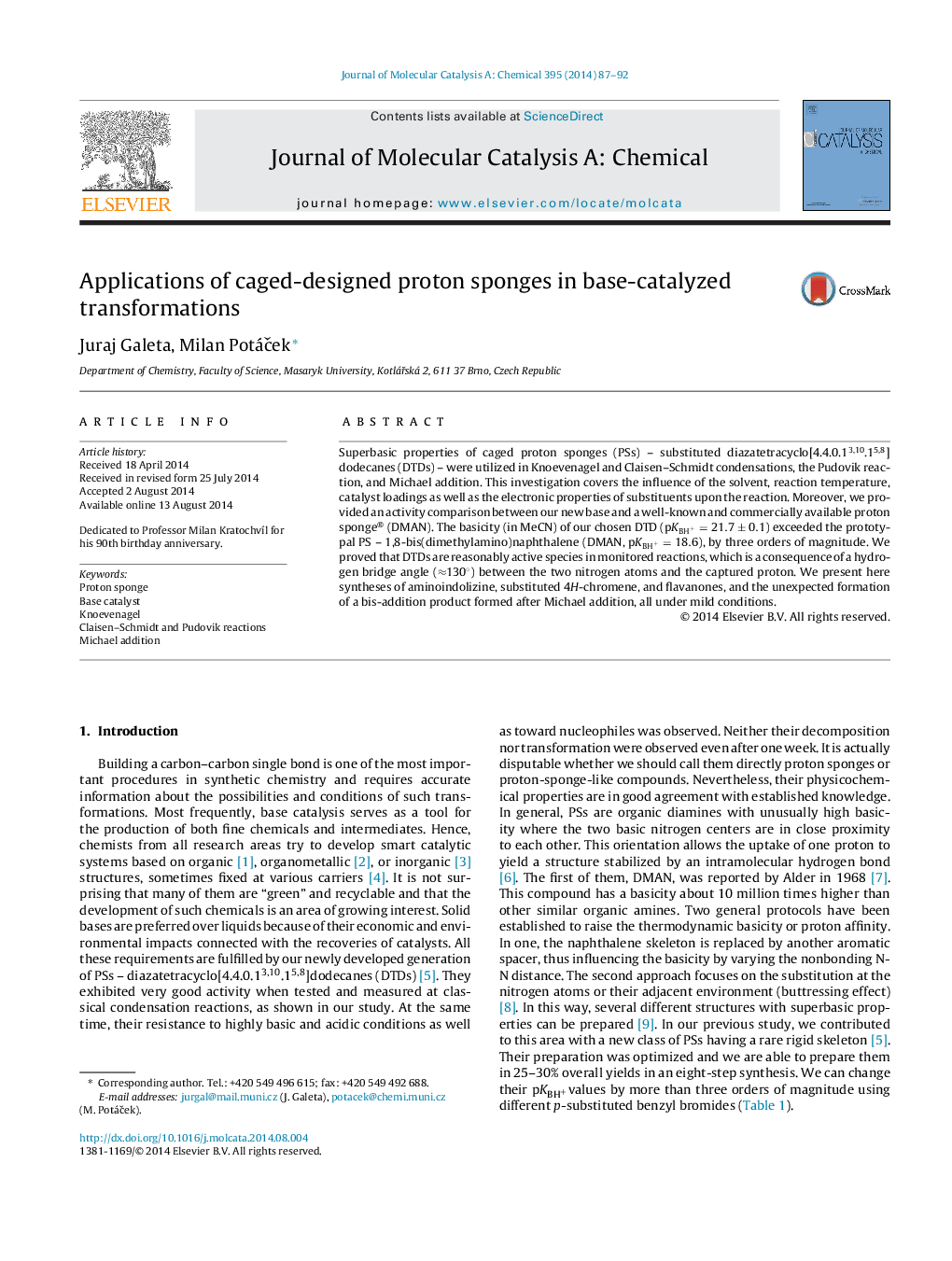| Article ID | Journal | Published Year | Pages | File Type |
|---|---|---|---|---|
| 65299 | Journal of Molecular Catalysis A: Chemical | 2014 | 6 Pages |
•Superbasic properties of a new proton sponge were tested in base catalyzed reactions.•Activity comparison between new base and proton sponge® (DMAN) was performed.•The new catalyst was very active in solvents, DMAN in solvent-free conditions.
Superbasic properties of caged proton sponges (PSs) – substituted diazatetracyclo[4.4.0.13,10.15,8]dodecanes (DTDs) – were utilized in Knoevenagel and Claisen–Schmidt condensations, the Pudovik reaction, and Michael addition. This investigation covers the influence of the solvent, reaction temperature, catalyst loadings as well as the electronic properties of substituents upon the reaction. Moreover, we provided an activity comparison between our new base and a well-known and commercially available proton sponge® (DMAN). The basicity (in MeCN) of our chosen DTD (pKBH+=21.7±0.1pKBH+=21.7±0.1) exceeded the prototypal PS – 1,8-bis(dimethylamino)naphthalene (DMAN, pKBH+=18.6pKBH+=18.6), by three orders of magnitude. We proved that DTDs are reasonably active species in monitored reactions, which is a consequence of a hydrogen bridge angle (≈130°) between the two nitrogen atoms and the captured proton. We present here syntheses of aminoindolizine, substituted 4H-chromene, and flavanones, and the unexpected formation of a bis-addition product formed after Michael addition, all under mild conditions.
Graphical abstractFigure optionsDownload full-size imageDownload high-quality image (259 K)Download as PowerPoint slide
